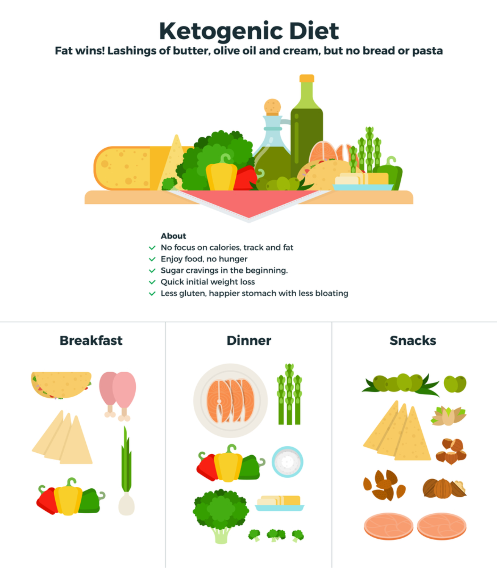The ketogenic diet’s stock is rising, but it isn’t new—it’s been around for nearly a century.
Despite how the media may frame it, the ketogenic diet wasn’t invented by celebrity dietitians. This dramatic, low-carbohydrate, high-fat diet, which changes the way your body uses energy, has been around since 1924, when Dr. Russell Wilder designed it as a treatment for epilepsy. Though it fell out of popularity with the development of anti-seizure drugs, it’s still used to treat epilepsy in cases where medication has been ineffective.
Recently, it’s also grown more popular as a weight-loss method. The well-known Atkins diet begins with a two-week ketogenic phase, and other diets have incorporated it through the years, but “keto,” as it is sometimes known, also functions as a standalone diet plan.

How Does It Work?
Your body usually burns glucose for energy, and it typically gets that glucose from the carbohydrates in your diet. The ketogenic diet, however, is low in carbohydrates, which causes your body to turn to a different energy source—ketones. Ketones are produced through the breaking down of stored fat, which leads to the weight-loss angle.
- Key components of the ketogenic diet include:
- Meat, including processed meats such as sausages
- Eggs
- Cheese
- Fish
- Butter
- Oils
- Nuts and seeds
- High-fiber vegetables
When the diet is done correctly, research shows initial weight loss happens more quickly than with other diets (though it appears to level off over time). However, as with any diet method, talk to your doctor before you begin. She can help you determine whether the ketogenic approach is right for you.
Sources:
asu.edu, charliefoundation.org, health.harvard.edu, consumerreports.org, diabetes.org, eatright.org, heart.org
